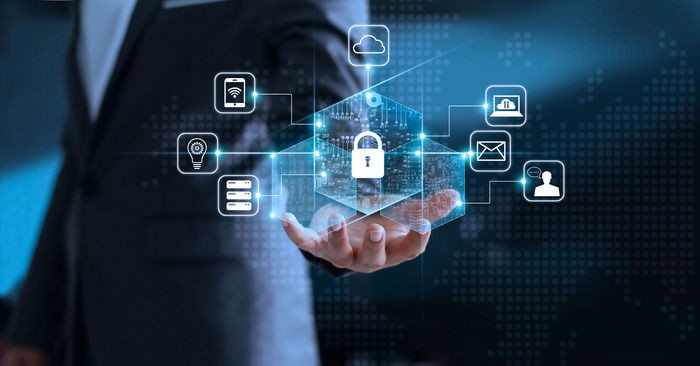Experts call the online realm an information superhighway. Nevertheless, in this digital landscape, unscrupulous individuals seek to exploit and pilfer your personal data. Hence, acquiring the knowledge necessary to secure your devices, network, and sensitive information is prudent. It allows you to prevent your passwords, Social Security number, and bank account details from falling into the wrong hands while traversing this expansive digital highway.
Below are seven uncomplicated measures that can safeguard you and your personally identifiable information.

Seven Easy Ways to Safeguard Your Personal Data
-
Encrypt your data with a VPN
A virtual private network (VPN) lets you choose a specific server and location for connecting to the internet. This technology has been utilized since 2005 and has undergone extensive testing, ensuring its reliability and security.
Using a VPN offers several significant advantages. First, VPN service providers employ robust encryption protocols to protect your data. Consequently, when you use a VPN, your data becomes encoded. Even if an unauthorized individual intercepts your connection and attempts to steal your information, they cannot decipher or exploit it.
In addition to securing your data through encryption, a VPN also conceals your IP address and provides you with a different one, ensuring your privacy and anonymity. Moreover, by enabling you to select servers in various global locations, you can bypass restrictions on accessing geo-blocked content.
-
Use Free Wi-Fi with Caution.
Engaging in some internet shopping occasionally doesn’t hurt anyone, right? But, open public Wi-Fi networks lack adequate security measures, leaving your online activities vulnerable to prying eyes. Exercise caution and avoid making credit card transactions until you’re connected to a trusted, password-protected network in the comfort of your own home.
Consult CyberGhost’s Wi-Fi data security guide for tips on safeguarding your data while using Wi-Fi.
-
Secure Your Devices
Criminals constantly seek vulnerabilities to exploit before software companies have a chance to address them. However, we advise maintaining a regular software update routine and promptly installing newer versions in order to ensure the presence of essential patches and safeguards against security risks.
Visit the developers’ official website to get the latest updates for your security software, operating system, internet browsers, and applications. They often provide options to receive email notifications or enable automatic updates. It’s essential to pay attention to reminders about updating your systems. Neglecting these updates could potentially expose your information to unauthorized access by hackers.
-
Secure Your Accounts
After ensuring the security of your computer, tablet, and phone, implement measures to safeguard your accounts. Place a strong emphasis on safeguarding accounts harboring delicate personal information, such as your financial institution, electronic mail, and social networking profiles.
-
Develop and Employ Robust Passwords.
It entails using a minimum of 12 characters. Enhancing the strength of a password is often simplest by increasing its length. You may opt to construct a passphrase composed of random words to ensure your password is easily memorable while refraining from utilizing ordinary terms or phrases.
-
Avoid Storing Passwords in your Browser.
Browsers and applications offer the handy feature of saving your passwords. However, in case of device loss, theft, or unauthorized access to your workstation, it could lead to complete accessibility of all the accounts associated with the stored passwords.
To prevent this, turn off the automatic saving of passwords and delete any previously stored passwords. If you consider autofill an essential convenience, use a reliable password management tool to store your passwords securely. These password managers facilitate centralizing and protecting your passwords with a master password. Premium password managers offer compatibility across various devices, enabling convenient password storage on both mobile and desktop platforms.
-
Use Multi-Factor Authentication
Adding a step of verification enhances the security of your online accounts. Multi-factor authentication asks you to enter a code or a token sent to your phone or email after entering your password. This way, even if someone steals your password, they won’t be able to log in without the second factor.

We can classify the additional verification elements into two main types:
- Possession-based verification involves possessing something that serves as a credential, such as a passcode generated by an authentication application or a dedicated security key.
- Biometric-based verification entails using your unique biological traits, such as fingerprints, retinal patterns, or facial features, for authentication purposes.
Implementing multi-factor authentication increases the level of difficulty for individuals attempting unauthorized access to your accounts, even if they acquire your username and password.
Anti-theft:
It pertains to safeguarding data against unauthorized access and theft, whether stored or in use. Securing data at rest primarily involves controlling access and implementing essential security measures like firewalls, encryption, and threat monitoring. On the other hand, protecting data during usage or transmission requires a combination of fundamental security measures and advanced protection. While anti-theft software frequently applies in enterprise environments, individuals can also avail themselves of personal solutions such as McAfee Total Protection or Absolute Home & Office for data protection purposes.
Verify the site’s security:
Prior to providing any personal details on a website, inspect the upper section of your browser. Confirm the presence of a lock symbol and ensure that the URL commences with “https.” These indicators signify the site’s security. Additionally, you can ascertain the site’s reliability by reviewing its privacy policy, locating contact information, or identifying a seal that denotes verification and security.